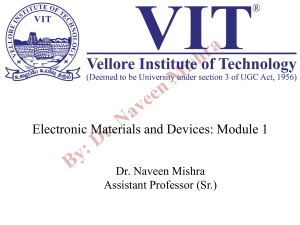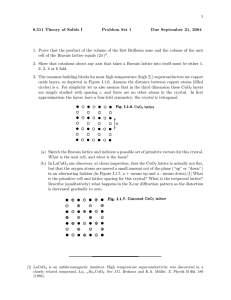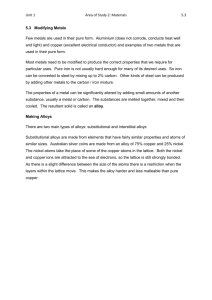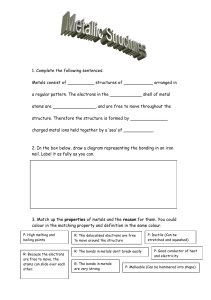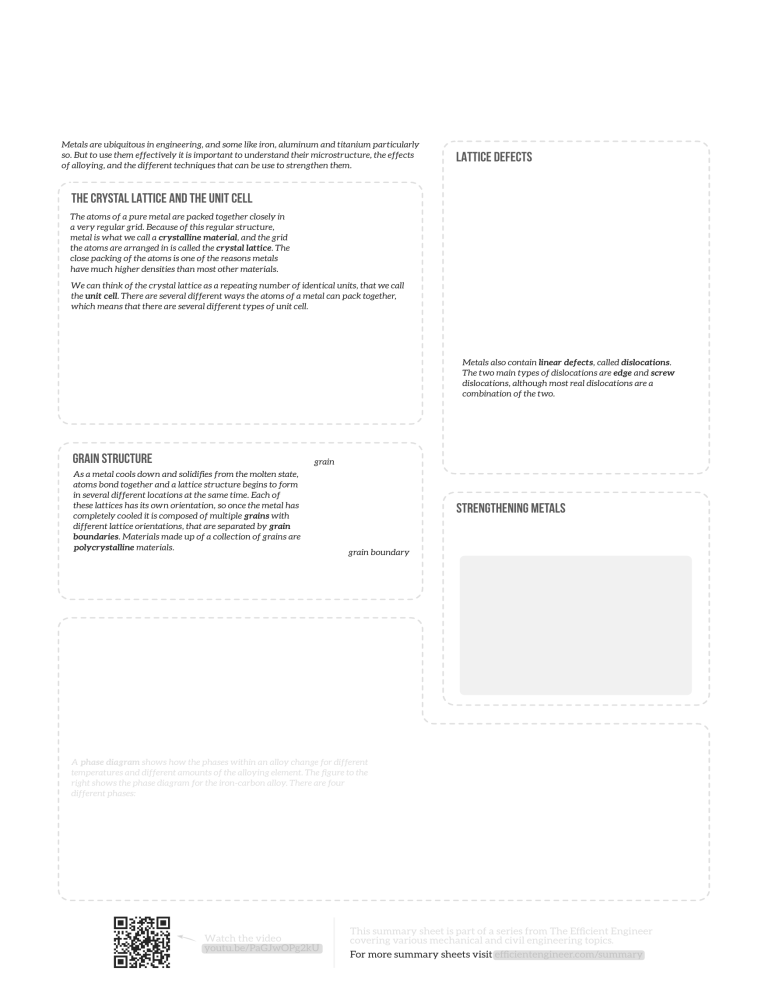
Metals are ubiquitous in engineering, and some like iron, aluminum and titanium particularly so. But to use them effectively it is important to understand their microstructure, the effects of alloying, and the different techniques that can be use to strengthen them. LATTICE DEFECTS THE CRYSTAL LATTICE AND THE UNIT CELL The atoms of a pure metal are packed together closely in a very regular grid. Because of this regular structure, metal is what we call a crystalline material, and the grid the atoms are arranged in is called the crystal lattice. The close packing of the atoms is one of the reasons metals have much higher densities than most other materials. We can think of the crystal lattice as a repeating number of identical units, that we call the unit cell. There are several different ways the atoms of a metal can pack together, which means that there are several different types of unit cell. Metals also contain linear defects, called dislocations. The two main types of dislocations are edge and screw dislocations, although most real dislocations are a combination of the two. Grain Structure grain As a metal cools down and solidifies from the molten state, atoms bond together and a lattice structure begins to form in several different locations at the same time. Each of these lattices has its own orientation, so once the metal has completely cooled it is composed of multiple grains with different lattice orientations, that are separated by grain boundaries. Materials made up of a collection of grains are polycrystalline materials. STRENGTHENING METALS grain boundary A phase diagram shows how the phases within an alloy change for different temperatures and different amounts of the alloying element. The figure to the right shows the phase diagram for the iron-carbon alloy. There are four different phases: Watch the video youtu.be/PaGJwOPg2kU This summary sheet is part of a series from The Efficient Engineer covering various mechanical and civil engineering topics. For more summary sheets visit efficientengineer.com/summary
